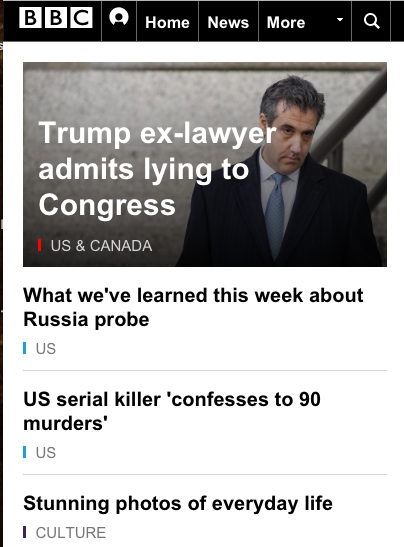What works in one place may not be as effective in another, that’s what we keep learning about digital storytelling.
I believe that culture, markets and newsroom culture have definite impact on how a media organization tells stories digitally.
In my own experience, I find it best to emphasize a “mobile first” mentality, and do all conceptualizing, writing, editing and designing for the smallest platform–the phone.
But we are all experimenting and learning as we go, which is why I was keen to see what the BBC had found out with its experiment that included an exhaustive 35 prototypes, which have yielded at least two new formats in the BBC’s reporting.
Please read the Nieman Lab piece for all the details.
Some highlights that I find of interest:
-
Mobile web, not apps: Since the team aimed to design for Generation Z and lower-income women age 28-45, two groups underserved by the BBC, they focused on designing for mobile web and text-based news instead of storage-needy apps/data plan-eating video.
This is becoming a universal and I find this to be true in many of my own projects. Mobile web is the way to go.
-
Adapt the context, not the content: They considered experimenting with personalization by changing the way the stories were written, instead of the story selection —
Indeed, and that is why in my workshops I emphasize new templates and modes of storytelling.
What to try
-
Hyperlocal — Imagine reading a few paragraphs about a utility increase or new police policy — and then getting a very clear “what does this mean for me” box adapted (not personalized, of course) to your local area.
This is key: what is important? What do we know? What don’t we know? Snippets and outlines do well in mobile storytelling. Don’t forget the visuals to make it all more palatable on the small screen.
-
Summary — Understanding that many readers encountering an article may not have followed the minute details of an issue outlined in several other articles, this prototype tested journalist-written summaries or a timeline punctuated by previous push alerts (reusing work, yay!). They also attempted to adapt based on a user’s reading history, but that bothered users who might have read up on the topic on other websites.
As I repeat often, push notifications are those little tapas that we offer readers to stimulate their appetite. They are the lean forward moment that may yield a return to the story for lean back consumption.
The study reinforces the importance of headlines, simplification and promotions of stories.
Example
Take a look at this story and how it was broken into explanatory segments:
https://www.bbc.com/news/world-us-canada-46378863

TheMarioBlog post # 2963